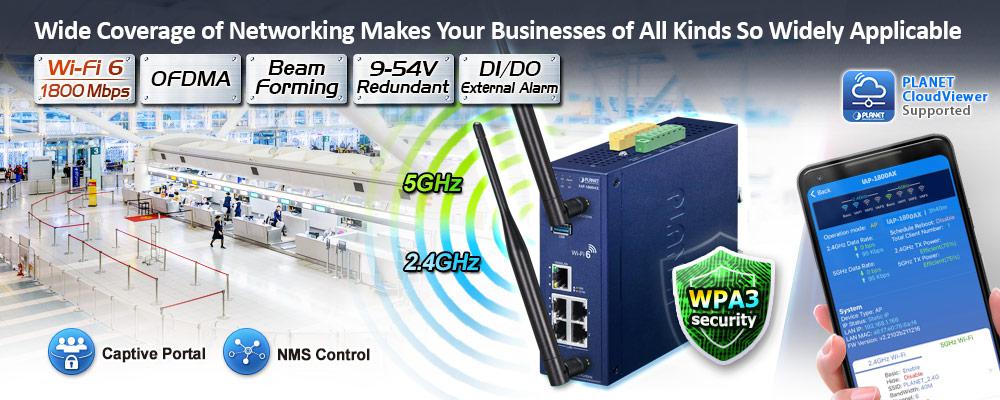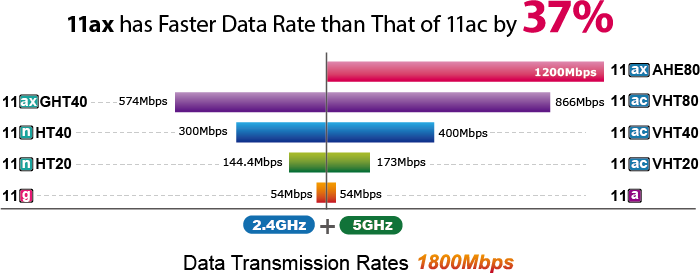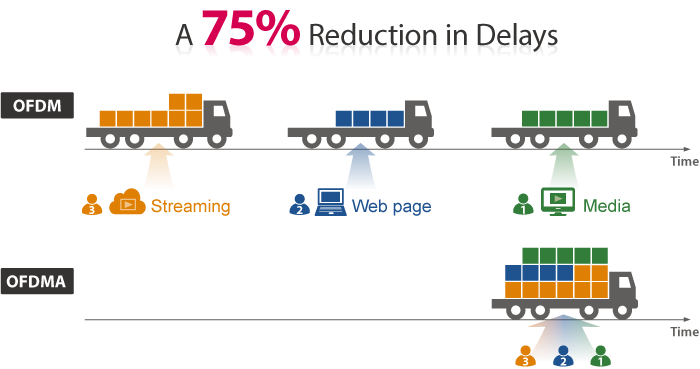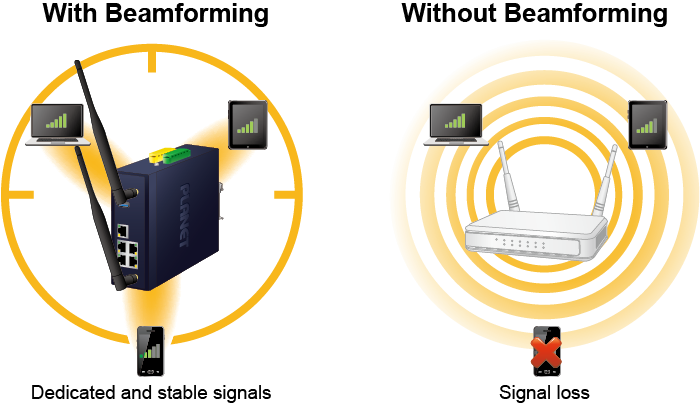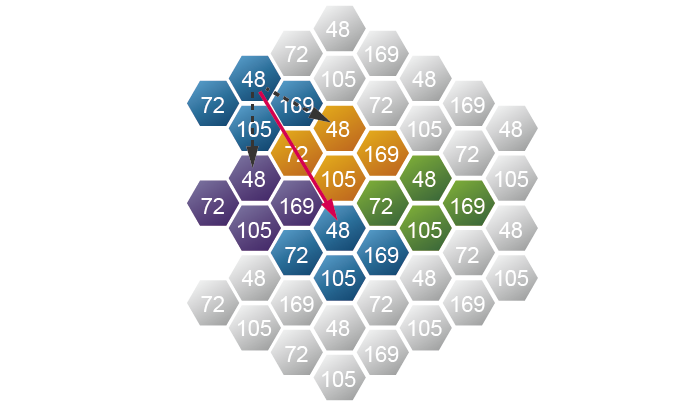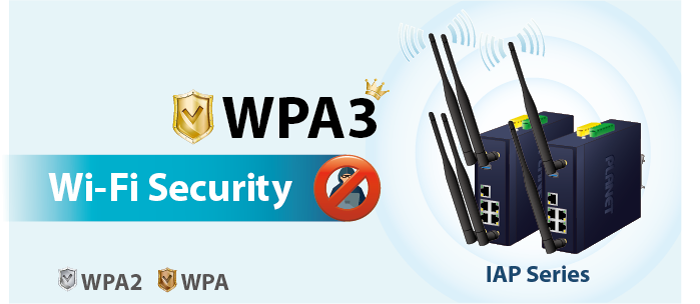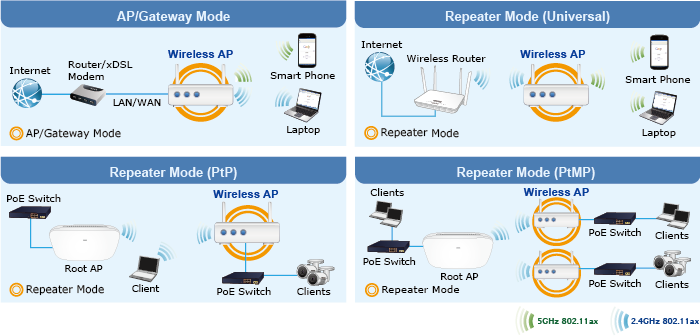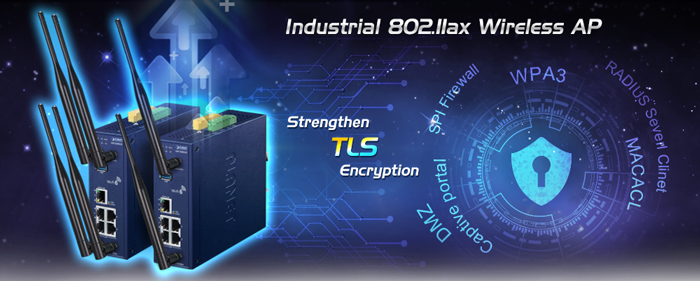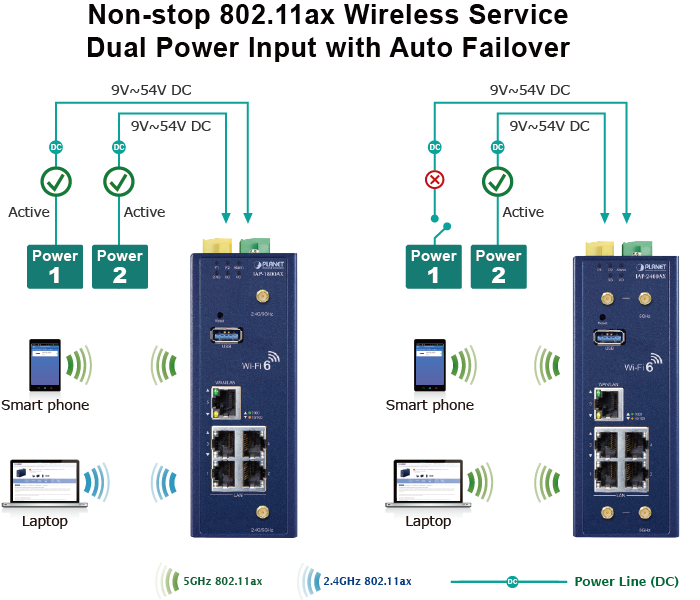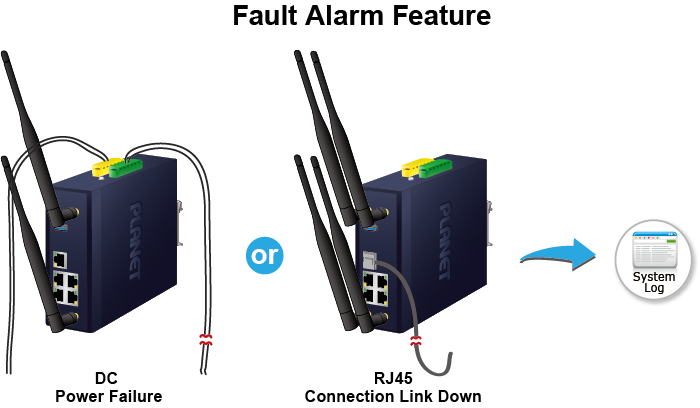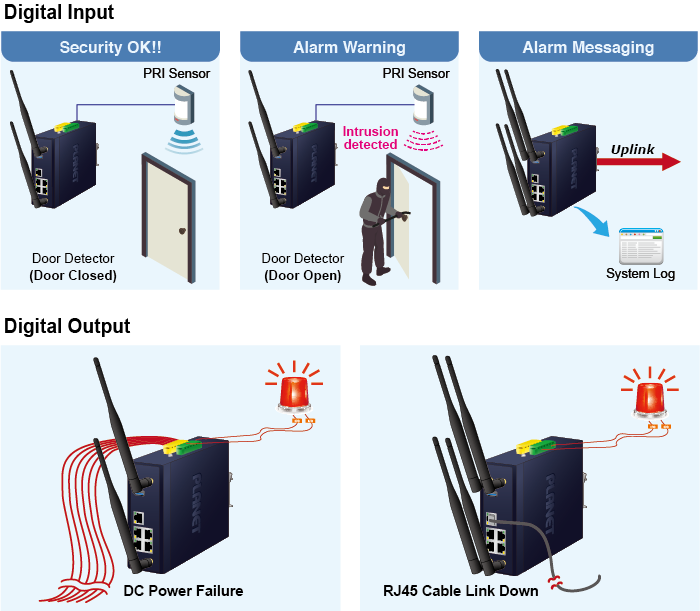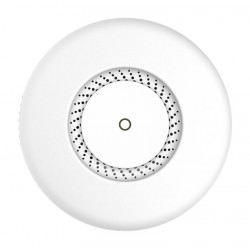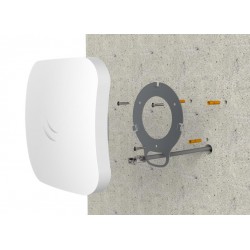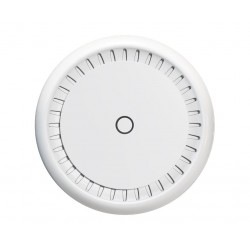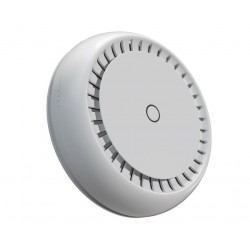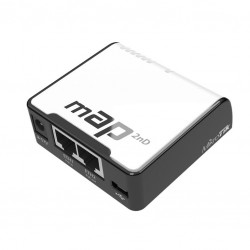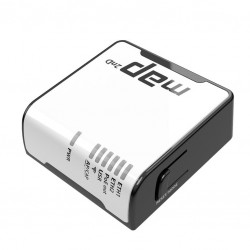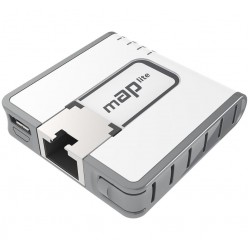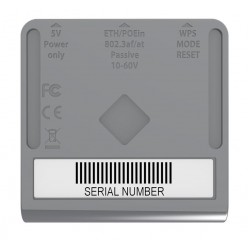PLANET Industrial Dual Band 802.11ax 1800Mbps Wireless Access Point with 5 10/100/1000T LAN Ports
- ΔΙΑΘΕΣΙΜΟΤΗΤΑ: 15-20 Ημέρες
- Κωδικός Προϊόντος: IAP-1800AX
- EAN: 4711605286633
| Hardware Specifications | |
| Interfaces | 5 10/100/1000BASE-T RJ45 Ethernet ports including 4 LAN ports (Ports 1 to 4) 1 WAN/LAN port (Port 5) |
| Wireless Connector | Built-in two RP-SMA female connectors |
| USB Port | 1 USB 3.0 port |
| DI & DO Interfaces | 2 Digital Input (DI): Level 0: -24V~2.1V (±0.1V) Level 1: 2.1V~24V (±0.1V) Input Load to 24V DC, 10mA max. 2 Digital Output (DO): Open collector to 24V DC, 100mA max. |
| Connector | Removable 6-pin terminal block for power input Pin 1/2 for Power 1, Pin 3/4 for fault alarm, Pin 5/6 for Power 2 |
| Reset Button | < 5 sec: System reboot > 10 sec: Factory default |
| Enclosure | IP30 metal case |
| Dimensions (W x D x H) | 50 x 135 x 135 mm |
| Weight | 773g |
| Power Requirements – DC | 9~54V DC, 1.8A |
| Power Consumption | Max. 6.4 watts/ 21BTU (No Loading at DC 54V) Max.10.8 watts/ 36BTU (Full loading at DC 54V) |
| Installation | DIN-rail, desktop, wall-mounting |
| LED Indicators | System: P1 (Green) P2 (Green) Alarm (Red) I/O (Red) Ethernet Interfaces (Ports 1-4 LAN Port and Port 5 WAN/LAN Port): 1000 LNK/ACT (Green) 10/100 LNK/ACT (Amber) Wi-Fi: 2.4GHz(Green) 5GHz(Green) |
| Wireless Specifications | |
| Wi-FI Standard | IEEE 802.11a/n/an/ac/ax 5GHz (2Tx2R) IEEE 802.11g/b/n/ax 2.4GHz (2Tx2R) |
| Band Mode | 2.4GHz & 5GHz concurrent mode |
| Data Modulation | 802.11ax: MIMO-OFDMA (BPSK / QPSK / 16QAM / 64QAM / 256QAM, 1024QAM) 802.11ac: MIMO-OFDM (BPSK / QPSK / 16QAM / 64QAM / 256QAM) 802.11a/g/n: OFDM (BPSK / QPSK / 16QAM / 64QAM) 802.11b: DSSS (DBPSK / DQPSK / CCK) |
| Antenna | 4 dBi 2.4GHz and 5GHz dual-band external antennas with RP-SMA male connectors for Wi-Fi |
| Frequency Range | |
| Operating Channels | 2.4GHz America FCC: 1~11 Europe ETSI: 1~135GHz America FCC: Non-DFS: 36, 40, 44, 48, 149,153,157,161,165 DFS: 52, 56, 60, 64, 100, 104, 108, 112, 116, 132, 136, 140Europe ETSI: Non-DFS: 36, 40, 44, 48 DFS: 52, 56, 60, 64, 100, 104, 108, 112, 116, 120, 124, 128, 132, 136, 1405GHz channel list may vary in different countries according to their regulations. |
| Channel Width | 20MHz, 40MHz, 80MHz |
| Data Transmission Rates | Transmit: 600 Mbps* for 2.4 GHz and 1200 Mbps* for 5 GHz Receive: 600 Mbps* for 2.4 GHz and 1200 Mbps* for 5 GHz*The estimated transmission distance is based on the theory. The actual distance may vary in different environments. |
| Transmission Power | 11b: 23dbm+/- 1.5dbm @11Mbps 11g: 20dbm+/- 1.5dbm @54Mbps 11g/n: 20dBm +/- 1.5dbm @MCS7, HT20 17dBm@MCS7,HT40 11a: 19.5dBm +/- 1.5dbm @54Mbps 11a/n: 19.5dBm+/- 1.5dbm @MCS7, HT20 17dBm@MCS7, HT40 11ac HT20: 20+/-1.5dBm @MCS8 11ac HT40: 17+/-1.5dBm @MCS9 11ac HT80: 14.5+/-1.5dBm @MCS9 11ax HT20: 20+/-1.5dBm @MCS9 11ax HT40: 17 +/- 1.5dBm @MCS9 11ax HT80: 14.5 +/- 1.5dBm @MCS11 |
| Receiver Sensitivity | 11b: -99dBm @11Mbps 11g: -95dBm @54Mbps 11g/n: -90dBm @HT20, MCS7 -86dBm @HT40, MCS7 11a: -90Bm @54Mbps 11a/n: -85dBm @HT20, MCS7 -81dBm @HT40, MCS7 11ac: -90dBm +/- 2dBm @VHT20 MCS8 11ac: -85dBm +/- 2dBm @VHT40 MCS9 11ac: -68dBm +/- 2dBm @VHT80 MCS9 11ax: -61dBm +/- 2dBm @HE20 MCS11 11ax: -58dBm +/- 2dBm @HE40 MCS11 11ax: -55dBm +/- 2dBm @HE80 MCS11 |
| Encryption Security | WPA3 Personal, WPA2/WPA3 Personal WPA2 Personal (AES), WPA2 Personal (TKIP), WPA2 Personal (TKIP+AES) WPA/WPA2 Personal (AES), WPA/WPA2 Personal (TKIP), WPA/WPA2 Personal (TKIP+AES) WPA2 Enterprise, WPA/WPA2 Enterprise |
| Management Functions | |
| Basic Management Interfaces | Web browser SNMP v1, v2c PLANET Smart Discovery utility PLANET NMS controller supported |
| Secure Management Interfaces | TLS 1.1, TLS 1.2, TLS 1.3 SNMP v3 |
| Operation Modes | Access Point (default) Gateway Repeater |
| LAN | Static IP/* DHCP Client |
| WAN | Static IP Dynamic IP PPPoE/PPTP/L2TP |
| VLAN | IEEE 802.1Q VLAN (VID: 1~4094) SSID-to-VLAN mapping to up to 4 SSIDs |
| Wireless Security | Enable/Disable SSID Broadcast Wireless MAC address filtering User Isolation |
| Max. SSID | 8 (4 per radio) |
| Max. Wireless Clients | 150 (100 is suggested, depending on usage) |
| Wi-Fi Advanced | Auto Channel Selection 5-level Transmit Power Control : - Max (100%) - Efficient (75%) - Enhanced (50%) - Standard (25%) or Min (15%) Client Limit Control Coverage Threshold *Wi-Fi channel analysis chart Seamless Roaming Beamforming BSS Coloring 2.4GHz WLAN Partition 5GHz WLAN Partition RTS Threshold |
| Wireless Roaming | IEEE 802.11k, 802.11v, and 802.11r |
| Wireless QoS | Supports Wi-Fi Multimedia (WMM) |
| System Management | Setup wizard Remote management through PLANET DDNS/ Easy DDNS Configuration backup and restore Supports UPnP Supports IGMP Proxy Supports PPTP/L2TP/IPSec VPN Pass-through Supports Captive Portal, RADIUS Server/Client (Gateway mode) Diagnostics |
| Status Monitoring | Dashboard System status/service Statistics Connection status |
| Event Management | Remote System Log Local Event Log |
| Self-healing | Supports auto reboot settings per day/hour |
| Central Management | Applicable controllers: - NMS-500, NMS-1000V - Wireless Switch: WS-1032P, WS-2864PVR - VPN Gateway: VR-300 series, IVR-300 series - PLANET CloudViewer App |
| Standards Conformance | |
| Regulatory Compliance | FCC Part 15 Class A, CE |
| Environment | |
| Operating | Temperature: -40 ~ 75 degrees C Relative humidity: 5 ~ 90% (non-condensing) |
| Storage | Temperature: -40 ~ 75 degrees C Relative humidity: 5 ~ 90% (non-condensing) |



